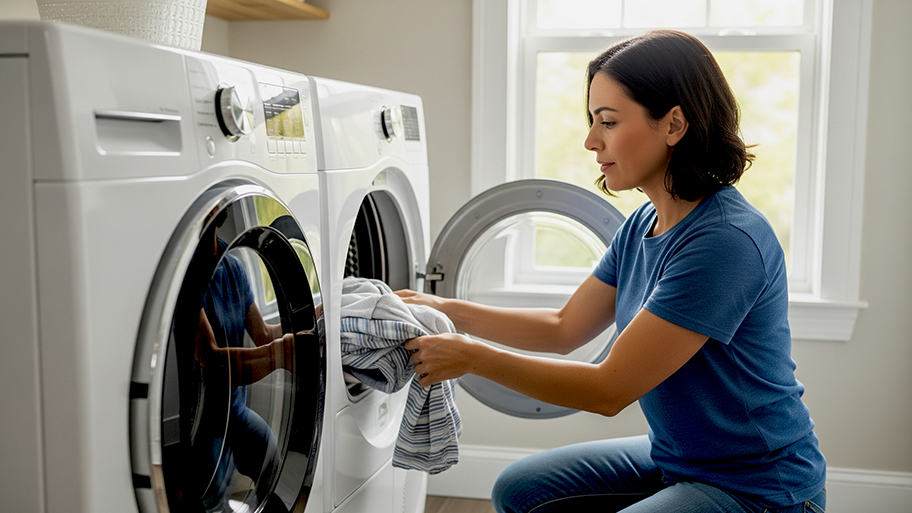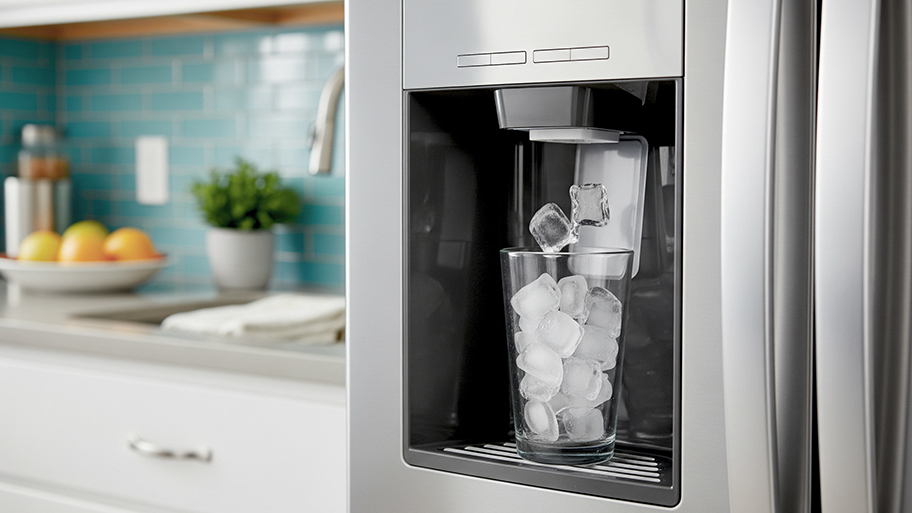
Replacing a dryer belt costs more than just the part unless you can DIY it. The labor cost can easily surpass 90% of the product cost, so if you are handy with tools, try it yourself first.
Overstuffing a washing machine might save time, but damaged clothes and expensive repairs aren’t worth the risk


An overloaded washing machine doesn’t clean clothes properly.
Overstuffing can stress the machine, damage the bearings, and break the motor.
The keys to your washer’s longevity are balance and proper loading.
Washing machine repair averages $175 but can easily exceed $450 for more extensive repairs.
Overstuffing your washing machine is a common mistake, but you’d do best to avoid it. We get it; there’s always another load that needs attention, no matter how diligent you are with the schedule. You may think you’re outsmarting the time gods, but an overloaded washing machine will leave you with a little more than you bargained for—and not in a good way.
An overloaded washer prevents your clothes from getting as clean as they could be. When done repeatedly, it can seriously damage your machine and put costly repairs in your future.

The short answer: nothing good. An overloaded washing machine often leads to dirty, damaged clothes, drain clogs, and expensive repairs. Here’s more.
Too many clothes will prevent your washer from working properly. Your machine needs space to agitate, your clothes need space to move around freely, and there should be ample room for the laundry detergent and the water to mix and move through the load. If the drum is jam-packed with clothes, none of this can happen.
With an overloaded washer, your clothes will move through the cycle in one giant bundle. Ultimately, you’ll clean some stains, but others will come out of the washer just looking wetter, stained, and plagued by sticky detergent residue.
Clothes need a little friction to remove dirt and stains. When a heavy load unbalances the washing machine, the friction has more of a sandpaper effect that will eventually damage your clothes. Plus, an overloaded washing machine increases the likelihood of zippers catching on other garments, tangles, and excess stretching.
If you have a front-loader, an overstuffed machine will force clothes up against the door and the rubber door seal. As the drum rotates, the clothes will rub against the seal and likely get damaged in the process.
Most washing machine drums have a weight limit to protect the suspension and bearings (the component in your washer that supports the rotation of the drum) of your machine. Over time, the excess stress can burn out the motor and damage your appliance.
Over the years, you’ve probably lost a sock or two in the wash. While you’re sure they went in as pairs, one or two left the wash cycle without their partner. No, you’re not crazy; socks, underwear, and other small items can disappear in the wash if you overload it. More specifically, these items can get sucked into the machine’s drain hose and prevent the washer from draining properly.
Of course, you could attempt a DIY appliance repair, but if you don’t know where to start, you’ll probably have to pay for washing machine repair, which averages about $175, according to HomeAdvisor.
While overloading a washing machine is bad for your appliance, underloading can also cause trouble. Most importantly, it wastes energy, detergent, and time. Second, undersized loads throw the machine off balance during the spin cycle. Yes, you know what we’re talking about: That loud, thumping sound that can have you ducking for cover if you don’t know what’s happening.
The maximum load capacity of your washing machine varies depending on the manufacturer, size, and model. If you’re not sure what the load capacity is, a good first step is to check your owner’s manual for the proper guidelines.
If your washing machine is an older model and you don’t have an owner’s manual, a good rule of thumb is to leave six inches of space between your wash load and the top of the drum.

When loading a washing machine, it’s important to load the washer correctly and leave enough space for the appliance to do its job and function properly.
Add clothes evenly around the agitator. If you don’t have an agitator, add clothes evenly around the edges of the wash plate instead of piling them in the middle of the drum.
Do not wrap towels and sheets around the agitator. Instead, add them on each side to maintain a balanced load.
Mix large and small items to keep the load balanced.
Like a top-load washer, loading a front-load washer is also about balancing and not overloading the machine.
Load your wash in one item at a time to prevent tangles and bundling.
Don’t pack clothes in the washer; leave about six inches from the top of the drum.
Incidentally, the rules about finding the right balance hold true for your clothes dryer too. Overloading or underloading your dryer will affect its performance, and you’ll also drive up your energy costs.
If you’re reading this article a little too late, and your washing machine is on the fritz, contact a local washing machine repair service to help you get your washing machine back up and running.
From average costs to expert advice, get all the answers you need to get your job done.

Replacing a dryer belt costs more than just the part unless you can DIY it. The labor cost can easily surpass 90% of the product cost, so if you are handy with tools, try it yourself first.

Discover the average ice maker repair cost, key price factors, and tips to save. Learn how to budget for your ice maker repair and when to repair or replace.

The cost to install a wall oven depends on several factors, including the type and size of the oven. Get our full wall oven installation cost breakdown.

Keep standing water and water damage from a clogged laundry drain at bay with this guide. Follow these steps for how to unclog a washer drain.

Refrigerators comprise many different parts. Understanding what they are and how they function will help you maintain it and troubleshoot problems.

This article outlines the top reasons why your electric cooktop may not be working and the most straightforward solutions to each problem.